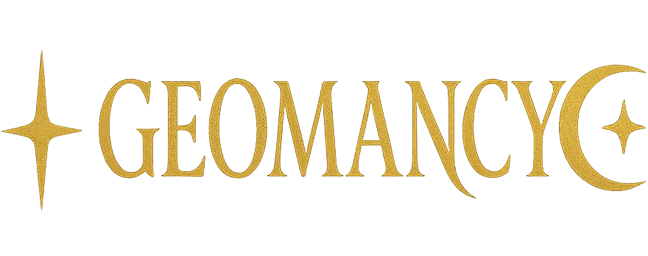He Tu: A Mathematical Model of Cosmic Energy
To truly understand the foundations of Chinese Feng Shui, one must first grasp the core ideas and structure of the He Tu (River Diagram). While previous sections have explored the origins and symbolism of the He Tu, this article focuses on how it is applied in the practice of Feng Shui.
At its core, the He Tu is more than a mythological diagram—it is a mathematical model of how qi (energy) flows in the universe. Just as Newton’s three laws describe the relationship between force and motion in physical space, the He Tu outlines a structured, numerical approach to understanding the invisible yet powerful flows of cosmic energy that shape life on Earth. In traditional Chinese cosmology, everything that grows, moves, or transforms on Earth is influenced by the orderly movement of planets and celestial forces in the universe. The He Tu represents a way to measure and predict these energy patterns.

A Numerical Map of Yin and Yang Energies
The He Tu arranges the numbers 1 to 10 into a spatial pattern aligned with the five cardinal directions—East, South, West, North, and Center. These numbers are not random: they reflect the interaction of yin and yang energies and their connection to the Five Elements (Wu Xing).
Here’s how the numbers are placed and interpreted:

Moreover, the numbers themselves reflect a deeper logic of balance:
1 + 5 = 6
2 + 5 = 7
3 + 5 = 8
4 + 5 = 9
5 + 5 = 10
This is not coincidental. In Chinese philosophy, all things are composed of yin and yang, and their interaction is mediated by Earth energy (symbolized by the number 5). Each pair above combines a “yang” number (odd) with the Earth (5) to produce its yin counterpart (even).
Decoding the Energies Behind Each Number
From this system, each number represents a distinct type of elemental energy, either in its yin or yang form:

- 1 – Yang Water
- 6 – Yin Water
- 2 – Yin Fire
- 7 – Yang Fire
- 3 – Yang Wood
- 8 – Yin Wood
- 4 – Yin Metal
- 9 – Yang Metal
- 5 – Yang Earth
- 10 – Yin Earth
This framework allows Feng Shui practitioners to analyze energy fields and apply the Five Elements in practical settings.
Practical Uses: From Home Numbers to Interior Layouts
The applications of He Tu are vast and extend beyond abstract theory. A few examples:
Personal Use: People can choose favorable numbers for house floors, mobile phone endings, license plate digits, or lucky numbers based on the elements they lack. For instance, someone lacking Fire energy might benefit from numbers 2 and 7, which are linked to Fire.
Environmental Feng Shui: In designing homes or offices, different areas (based on their direction) are aligned with specific types of energy. The He Tu helps determine which kind of person is most suited to live in a certain area, or what types of items should be placed in particular locations to promote harmony and well-being.

He Tu as the Cosmic Blueprint of Feng Shui
Ultimately, the He Tu diagram defines more than just directions and elements. It provides:
- A directional map of elemental forces,North (Water), South (Fire), East (Wood), West (Metal), Center (Earth);
- A numerical coding system for those forces,Enabling practitioners to calculate how qi flows, transforms, and combines in any environment
Future updates will explore these mechanisms in greater detail—offering more tools for those who wish to align their surroundings with the rhythms of the cosmos.
Final Thought
Just as modern physics relies on universal laws to explain material motion, traditional Chinese Feng Shui uses He Tu to model how invisible energies move and interact. It is a bridge between heaven and earth, number and nature, philosophy and daily life.
To embrace Feng Shui is to seek harmony—not just in space, but in spirit. And the He Tu is one of the earliest, most elegant maps ever drawn for that journey.
河圖:宇宙能量的數學模型
要真正理解中國風水的基礎,首先必須掌握河圖的核心思想和結構。雖然前面的章節已經探討了河圖的起源和象徵意義,但本文重點介紹它在風水實踐中的應用。
從本質上講,河圖不僅僅是一個神話圖表——它是一個描述宇宙中氣(能量)如何流動的數學模型。正如牛頓的三定律描述了物理空間中力與運動的關係一樣,河圖概述了一種結構化、數值化的方法,用於理解塑造地球上生命的無形但強大的宇宙能量流。在傳統的中國宇宙學中,地球上生長、移動或轉化的一切都受到宇宙中有序的行星和天體運動的影響。河圖代表了一種測量和預測這些能量模式的方式。

陰陽能量的數值地圖
河圖將數字1到10排列成與五個基本方向——東、南、西、北和中——對齊的空間模式。這些數字並非隨機:它們反映了陰陽能量的相互作用及其與五行(金、木、水、火、土)的聯繫。
以下是數字的放置和解釋方式:

此外,數字本身反映了更深層次的平衡邏輯:
1 + 5 = 6
2 + 5 = 7
3 + 5 = 8
4 + 5 = 9
5 + 5 = 10
這並非巧合。在中國哲學中,萬物皆由陰陽組成,它們的相互作用由土能量(以數字5為象徵)調和。上面的每一對都將一個”陽”數(奇數)與土(5)結合,產生其陰對應物(偶數)。
解碼每個數字背後的能量
從這個系統中,每個數字代表一種特定類型的元素能量,無論是其陰形式還是陽形式:

二、解读数字背后的能量属性
- 1 – 陽水
- 6 – 陰水
- 2 – 陰火
- 7 – 陽火
- 3 – 陽木
- 8 – 陰木
- 4 – 陰金
- 9 – 陽金
- 5 – 陽土
- 10 – 陰土
這個框架使風水從業者能夠分析能量場並在實際環境中應用五行。
實際應用:從房屋號碼到室內佈局
河圖的應用廣泛,超越了抽象理論。一些例子:
個人使用:人們可以根據他們缺乏的元素選擇有利的數字,用於樓層、手機尾號、車牌數字或幸運數字。例如,缺乏火能量的人可能會受益於與火相關的數字2和7。
環境風水:在設計住宅或辦公室時,不同的區域(基於它們的方向)與特定類型的能量對齊。河圖有助於確定哪種人最適合住在某個區域,或者應該在特定位置放置什麼類型的物品以促進和諧和福祉。

河圖作為風水的宇宙藍圖
最終,河圖不僅僅定義了方向和元素。它提供了:
- 元素力量的方向地圖,北方屬水、南方屬火、東方屬木、西方屬金、中央屬土;
- 這些力量的數值編碼系統,使從業者能夠計算氣在任何環境中如何流動、轉化和結合
未來的更新將更詳細地探索這些機制——為那些希望將周圍環境與宇宙節奏對齊的人提供更多工具。
最後的思考
正如現代物理學依賴普遍定律來解釋物質運動一樣,傳統的中國風水使用河圖來模擬無形能量如何移動和相互作用。它是天與地、數字與自然、哲學與日常生活之間的橋樑。
擁抱風水是尋求和諧——不僅在空間上,而且在精神上。而河圖是為這段旅程繪製的最早、最優雅的地圖之一。
